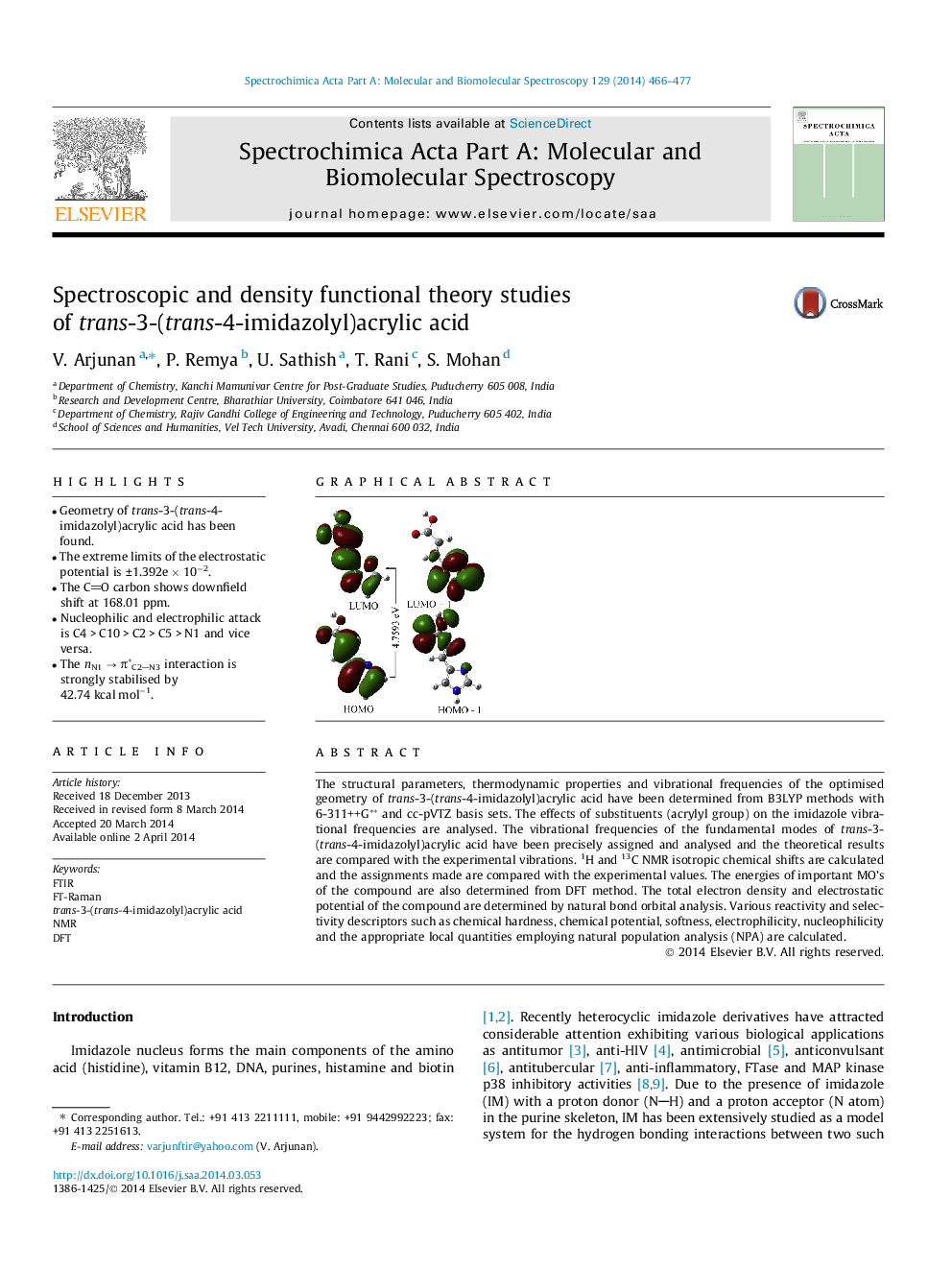| Article ID | Journal | Published Year | Pages | File Type |
|---|---|---|---|---|
| 1229896 | Spectrochimica Acta Part A: Molecular and Biomolecular Spectroscopy | 2014 | 12 Pages |
•Geometry of trans-3-(trans-4-imidazolyl)acrylic acid has been found.•The extreme limits of the electrostatic potential is ±1.392e × 10−2.•The CO carbon shows downfield shift at 168.01 ppm.•Nucleophilic and electrophilic attack is C4 > C10 > C2 > C5 > N1 and vice versa.•The nN1 → π*C2N3 interaction is strongly stabilised by 42.74 kcal mol−1.
The structural parameters, thermodynamic properties and vibrational frequencies of the optimised geometry of trans-3-(trans-4-imidazolyl)acrylic acid have been determined from B3LYP methods with 6-311++G** and cc-pVTZ basis sets. The effects of substituents (acrylyl group) on the imidazole vibrational frequencies are analysed. The vibrational frequencies of the fundamental modes of trans-3-(trans-4-imidazolyl)acrylic acid have been precisely assigned and analysed and the theoretical results are compared with the experimental vibrations. 1H and 13C NMR isotropic chemical shifts are calculated and the assignments made are compared with the experimental values. The energies of important MO’s of the compound are also determined from DFT method. The total electron density and electrostatic potential of the compound are determined by natural bond orbital analysis. Various reactivity and selectivity descriptors such as chemical hardness, chemical potential, softness, electrophilicity, nucleophilicity and the appropriate local quantities employing natural population analysis (NPA) are calculated.
Graphical abstractFigure optionsDownload full-size imageDownload as PowerPoint slide
